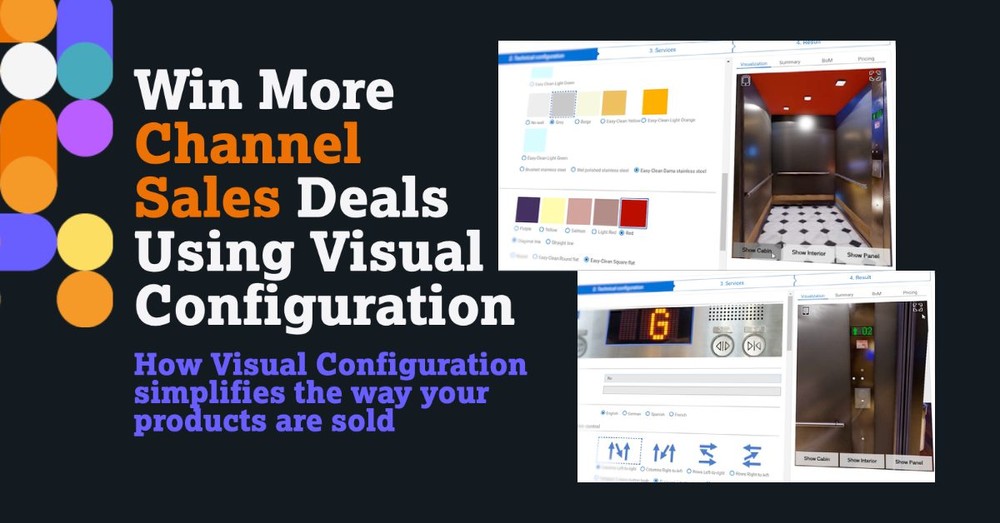Channel Sales is a well-understood strategy. When manufacturers lack the means to effectively commercialize and distribute their products and services they partner with specialized re-sellers. In doing so, the manufacturer gets to focus on the development of the product, while the channel partners focus on finding and signing new customers.
By helping your channel sales with a more simple, efficient, and effective sales process, you can win more deals. In other words, your job as a manufacturer is to make your products and solutions easy for your channel partner to sell.
If you are using channel sales you probably have dedicated teams ensuring that their channel partners are working from them.
How can manufacturers ensure that their channel Sales delivers more sales?
Your responsibility towards your channel partner is to help them sell. If the channel partner is not only offering your products but also your competitors too, you need to ensure that you are the go-to solution.
How can you ensure that channel sales offer your products above your competitor’s? Certainly not by being the cheapest, nor by offering higher commissions.
By competing on price, you might win the deal, but you will certainly end up losing the customer in the end.
Instead, you should focus on making your offer easier to sell to the end customer. This way, both the seller and the buyer can perceive the value of the product more clearly, and thus paving the way to the signing table. One of the ways to do this effectively is using visual configuration.
Visual configuration is a feature of Configure, Price, Quote software (CPQ), that shows customers the product as it is being configured. It uses realistic 3D and AR technology that is not only visually impactful but also 100% accurate to the configured specs.
A closer look at Visual Configuration
The elevator industry is a great example for explaining the sales process using Visual Configuration. This industry typically relies on channel sales partners to sell their equipment worldwide. It is also a great example because elevators must not only meet stringent regulations to ensure safety, they must also be appealing in terms of design and finishing details.
Safety first: product configurator as a failsafe
How can we ensure that the designers, sales teams, and customers configuring the elevator do not neglect safety or operational feasibility? How can we avoid delays by having to review all details, ensuring that they are compliant with building codes and regulatory standards?
Visual Configuration without a robust CPQ behind the sales tool, manufacturers would require sales engineers to go through, in detail, the configurations that resulted from a customer meeting or a sales order. This was cost-ineffective and lead to delays in the sales process.
Visual configuration is based on the configurator (constraints-based, AI-powered algorithm) that ensures that each product selection is 100% compatible with technical requirements, and thus buildable. It also ensures that all regulatory, and design requirements are also accounted for.
Not all visualization tools are the same. Visualization must be supported by a powerful configurator working behind the scenes.
The start of the Visual Configuration Process
Step 1: Capacity and Dimensions
First, you need to decide and define how big the room, or the elevator cabin should be. The elevator needs to fit in a pre-designed space or place and therefore defining and adjusting the width, height, and depth of the cabin and the resulting constraints like the possible load.
(Images of different cabin dimensions)
Step 2: Materials and Finishings
After deciding on the dimensions, the next step is to design all surfaces in the room or in this case the cabin. From floor materials, over wall designs to ceiling colors. A wide range of materials and colors are available for different use cases that need to fit and work well together when combined.
On top of the design additional room or cabin accessories and products like bumper rails, hand roles, mirrors, different door types, entrance sides and glass walls are available to be placed at different positions and in different configurations.
(Images of different cabin designs and accessories)
Step 3: Lighting
Lighting also plays an important role in the design of a room or an elevator interior. Different light types, forms, and alignments create different moods and illumination.
(Images of different lighting configurations)
Step 4: Buttons Panels and Controls
One very important product and part of a cabin configuration is the operation panel to use the elevator. Configuring a complete operation panel is a complex task as well with a wide range of different buttons, displays, information plates, communication devices and other components that can be selected and that need to be placed and arranged on the panel surface.
(Images of operation panel configuration)
Spatial configuration is a complex task that is best solved by human interaction, reflecting individual preferences and needs. Dragging and dropping the individual elements on the panel, rearranging them in real-time and getting instant feedback about possible geometrical constraints and resulting conflicts is an essential function in any configuration process.
(Images of spatial placements and conflicts)
Conclusion: Visual Configuration delivers more Channel Partner Sales
As we have discussed, visual configuration carries two primary advantages for Channel Partner Sales. First, it makes the sales process easy, and effective for the salesperson. A sales rep can trust the configuration is 100% correct, and therefore can assure the buyer every step of the way.
Second, accurate and real-time visualizations can transform an ordinary sales meeting. Customers can see renderings of their options in 3D as well as in Alternative Reality.
If you are depending on Channel Partners to sell your configurable products, Visual Configuration is a safe bet to drive more sales.
Ready to learn more? Check out our visualization page, or download our ultimate guide to visualization







